Welcome to Ukraine
Unit Four: Travelling
4.3. Welcome to Ukraine
Word-bank | Phrase-bank | Communication Box |
To welcome somebody Hearty Display Knick-knack Woodwork Hospitable Handmade | At somebody’s invitation In the best tradition To take care of something To set something up | Do you mean…? First things first. Such as? |
I. Conversation Warm-up.
Hooray! Our international friends are going to take a trip to Ukraine. Look at the pictures and say where you would like to take them.

Khreshchatyk, Kyiv
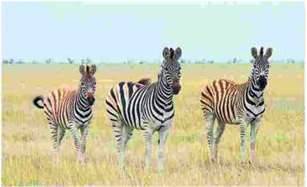
Askania Nova
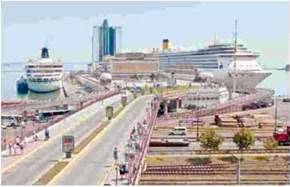
Odessa Port
Lviv, The Opera House
Example: I would like to take my international guests to Kyiv. We’ll be walking along Khreshchatyk the whole afternoon.
II. Pronunciation Warm-up.
Read and practise the sounds /i:/, /I/ and /аі/. Say what kinds of travelling it suggests.
WELCOME POEM
Let’s take a trip, just you and me,
Through the Carpathian Mountains and
The Black Sea.
I’ll give you a ride across Ukraine,
You’ll feel what it’s like if you go by train.
You’ll have a taste of Ukrainian dish
And stay with us as long as you wish.
III. Grammar Smart.
1. Look and recall.
Use articles with geographical names correctly when talking about travelling in Ukraine.
Name | No article | The |
Continent Country Cities Rivers Seas Lakes Mountains Peninsula | Europe Ukraine Kyiv, Lake Svytyaz | The Dnipro, the Danube The Black Sea The Carpathian mountains The Crimea |
A) Play a grammar hide-and-seek game.
Lake Svytyaz | Black Sea |
Dnipro | Sea of Azov |
Eastern Europe | Lviv |
Kyiv | Carpathians |
Danube | Kharkiv |
Crimean Mountains | Central Ukraine |
In two teams, name as many places as you can with/without an article.
Example: Team, A (the): We’ll be coming round the Carpathian Mountains.
Team В (no article): We’ll be coming to Kharkiv.
D) In groups, say as many sentences as you can about:
– travelling across Ukraine;
– visiting the capital city;
– sightseeing in your native place.
Example: I’m going to travel a lot in the Crimea this year.
2. Read and remember!
To talk about travelling, use these verbs correctly: come / bring = movement towards the speaker or with the speaker;
Examples: We’ll be coming round the mountains.
Dad is coming back from Moscow tomorrow. I know he is bringing a lot of presents.
Go / take = movement away from the speaker;
Examples: I’m going on a weekend trip. See you on Monday.
I’m taking my dog with me.
Live = be somewhere for long periods of time;
Example: Nazar lived in Ukraine when he was a child. Then his family moved to Canada.
Stay = be somewhere for short periods of time;
Example: Have you ever stayed in a hotel?
Keep = continue;
Example: The travellers were tired but kept on walking.
Leave = go away from somewhere;
Example: The train leaves at 12.40.
A) Play a grammar “coffeepot” game.
In pairs, ask questions about travelling using the word “coffeepot” instead of the verbs above. Your partner will guess the verb and answer your questions.
Example: A: Where did you “coffeepot” when you went to Turkey?
B: Oh, you mean where I stayed? I stayed in a hotel.
B) Look at the pictures (p. 112) and say what travel experience these children have.
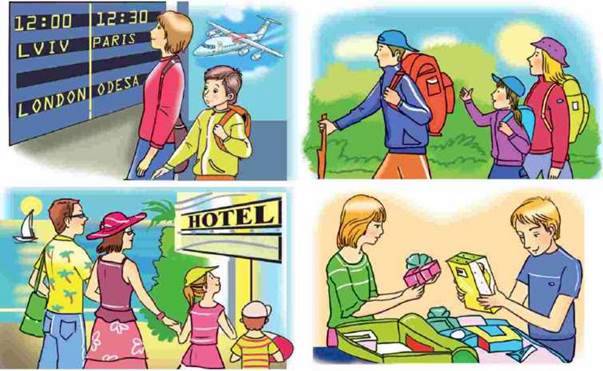
Example: The boy and his mother are at the airport. Their flight leaves at 10.30.
IV. Word Smart.
1. Study these word-combinations and describe:
A) how you invite your guests;
– at somebody’s invitation;
– to send / receive /accept / refuse an invitation;
– to look forward to;
– to plan carefully.
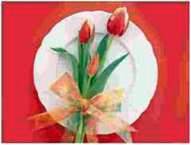
Example: Our international friends visit us every summer at our invitation.
B) how you welcome guests;
– to be / give a hearty welcome;
– to welcome somebody in the best Ukrainian traditions;
– to greet smb with bread and s>
– to put on national Ukrainian costumes;
– to be hospitable.
Example: Ii should be a hearty welcome in the best Ukrainian traditions.
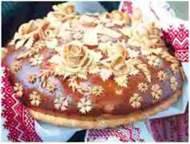
С) how you entertain your guests.
– to have a welcome party
– to cook some local dishes
– to take care of a cultural programme
– to set up a display of Ukrainian art
– to make a poster
– to bring small gifts
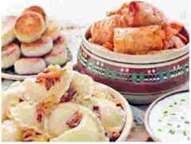
2. Describe any Ukrainian art object in the picture you like and let your friend guess. Cover these questions:
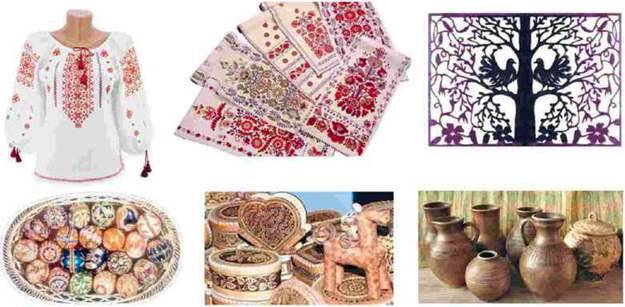
1. What does it look like?
2. What can we do with it?
3. Where do we keep it?
Example: It’s small and painted in different colours. You can give it as a present at Easter.
3. Work in groups and make a list of Ukrainian traditions of hospitality.
At home: Describe an international party you have ever had at school or at home. Write what worked well at the party.
Go to Ex. 61, 62 of your Workbook
V. Time to Listen and Read.
1. Listen to / read the conversation “Welcoming International guests”. Say what information from the text can help you to welcome your international guests in Ukraine.
WELCOMING INTERNATIONAL GUESTS
Steve: Have you heard the news today?
Ann: Do you mean the news about Martha and Phil coming to Ukraine at our invitation?
Steve: Exactly. We must plan carefully how to welcome them.
Ann: Sure. It should be a hearty welcome in the best Ukrainian traditions. How are we going to greet them?
Steve: With bread and s>
Ann: Good idea! Next, let’s have a welcome party. I’ll cook some local dishes and you’ll take care of a cultural programme.
Steve: Such as?
Ann: Something like a short concert, with folk songs, folk dance and music. And please, don’t forget to set up a display of Ukrainian art.
Steve: No problem. My classmates and I have plenty of vyshyvankas, vytynankas, pysankas and woodwork. Beside, we’ll make a poster about famous Ukrainians.
Ann: Splendid. What about bringing small gifts? We are hospitable, aren’t we?
Steve: What do you think of handmade knick-knacks as presents?
Ann: They would do, I guess.
BrE gift
AmE present
See First Aid Kit,
Word Meaning, p. 215
Across Culture: Ukraine

Vyshyvanka – вишиванка.

Vytynanka – витинанка.

Pysanka – писанка.
2. Say if it is true or false.
1. The children invited their international guests to come to Ukraine.
2. The children know much about Ukrainian traditions.
3. Ann is going to set up a display of Ukrainian art.
4. Steve likes the idea of organizing a cultural programme.
5. He is going to do everything by himself.
6. Ann remembers about presents.
3. Say how the following illustrates Ukrainian hospitality.
Example: The children are going to give a hearty welcome, in the best Ukrainian traditions of hospitality.
– to give a hearty welcome;
– to greet with bread and s>
– to have a welcome party;
– to cook local dishes;
– to bring small gifts.
VI. Time to Communicate.
A) In pairs, talk about welcoming international guests as in the pattern.
Pattern:
A: Have you heard… ?
B: Do you mean… ?
A: Exactly. We must….
B: Sure. It should be… . How are we going to
A: With…. We also can….
B: Good idea. Next… .
A: Such as?
B: Something like… .
A: No problem….
B: Splendid.
B) Act as Ann/Steve and describe her/his part of the job for the welcome party.
– a hearty welcome
– in the best Ukrainian traditions
– national Ukrainian costume
– local dishes
C) Describe your most memorable experience of welcoming guests at home / at school.
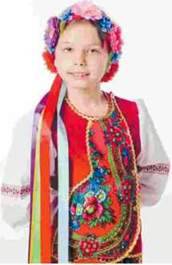
VII. Time to Write.
Make a list of things you can do to welcome international guests. Follow the format below.
Things to do
– To plan…
– To put on…
– To take care of…
– To have…
– To set up…
– To make…
– To choose…
Go to Ex. 63, 64 of your Workbook